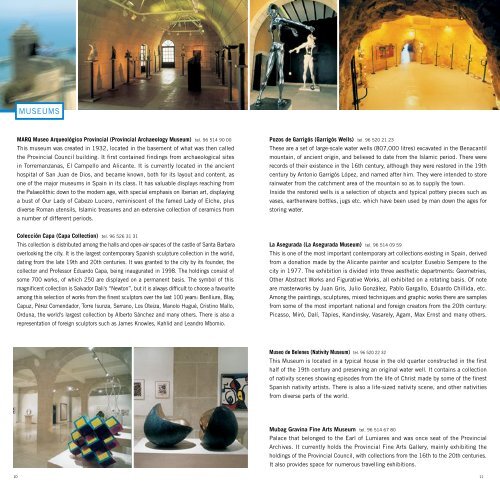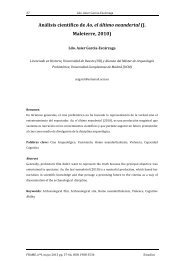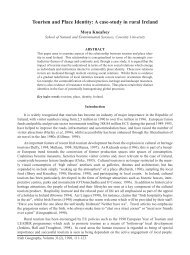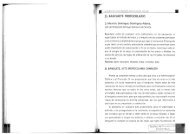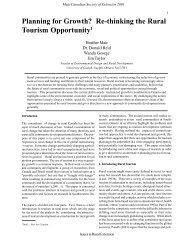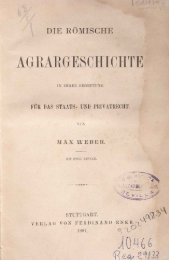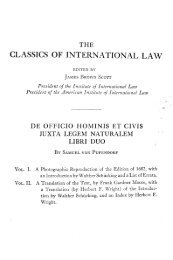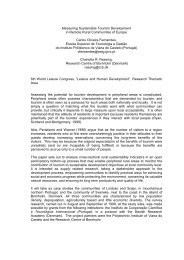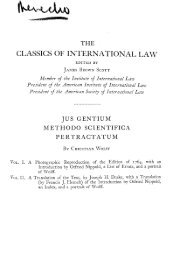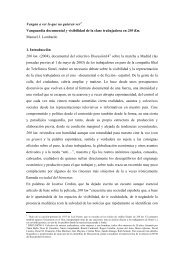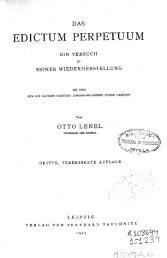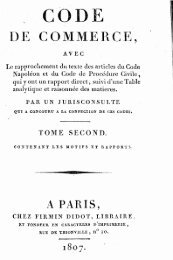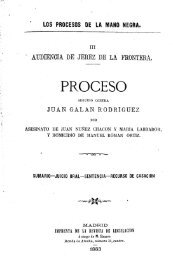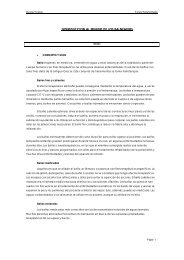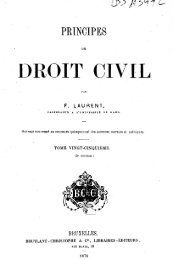Alicante Step by step - Universidad de Sevilla
Alicante Step by step - Universidad de Sevilla
Alicante Step by step - Universidad de Sevilla
Create successful ePaper yourself
Turn your PDF publications into a flip-book with our unique Google optimized e-Paper software.
MUSEUMS<br />
MARQ Museo Arqueológico Provincial (Provincial Archaeology Museum) tel. 96 514 90 00<br />
This museum was created in 1932, located in the basement of what was then called<br />
the Provincial Council building. It first contained findings from archaeological sites<br />
in Torremanzanas, El Campello and <strong>Alicante</strong>. It is currently located in the ancient<br />
hospital of San Juan <strong>de</strong> Dios, and became known, both for its layout and content, as<br />
one of the major museums in Spain in its class. It has valuable displays reaching from<br />
the Palaeolithic down to the mo<strong>de</strong>rn age, with special emphasis on Iberian art, displaying<br />
a bust of Our Lady of Cabezo Lucero, reminiscent of the famed Lady of Elche, plus<br />
diverse Roman utensils, Islamic treasures and an extensive collection of ceramics from<br />
a number of different periods.<br />
Colección Capa (Capa Collection) tel. 96 526 31 31<br />
This collection is distributed among the halls and open-air spaces of the castle of Santa Barbara<br />
overlooking the city. It is the largest contemporary Spanish sculpture collection in the world,<br />
dating from the late 19th and 20th centuries. It was granted to the city <strong>by</strong> its foun<strong>de</strong>r, the<br />
collector and Professor Eduardo Capa, being inaugurated in 1998. The holdings consist of<br />
some 700 works, of which 250 are displayed on a permanent basis. The symbol of this<br />
magnificent collection is Salvador Dali's “Newton”, but it is always difficult to choose a favourite<br />
among this selection of works from the finest sculptors over the last 100 years: Benlliure, Blay,<br />
Capuz, Pérez Comendador, Torre Isunza, Serrano, Los Oteiza, Manolo Hugué, Cristino Mallo,<br />
Orduna, the world's largest collection <strong>by</strong> Alberto Sánchez and many others. There is also a<br />
representation of foreign sculptors such as James Knowles, Kahlid and Leandro Mbomio.<br />
Pozos <strong>de</strong> Garrigós (Garrigós Wells) tel. 96 520 21 23<br />
These are a set of large-scale water wells (807,000 litres) excavated in the Benacantil<br />
mountain, of ancient origin, and believed to date from the Islamic period. There were<br />
records of their existence in the 16th century, although they were restored in the 19th<br />
century <strong>by</strong> Antonio Garrigós López, and named after him. They were inten<strong>de</strong>d to store<br />
rainwater from the catchment area of the mountain so as to supply the town.<br />
Insi<strong>de</strong> the restored wells is a selection of objects and typical pottery pieces such as<br />
vases, earthenware bottles, jugs etc. which have been used <strong>by</strong> man down the ages for<br />
storing water.<br />
La Asegurada (La Asegurada Museum) tel. 96 514 09 59<br />
This is one of the most important contemporary art collections existing in Spain, <strong>de</strong>rived<br />
from a donation ma<strong>de</strong> <strong>by</strong> the <strong>Alicante</strong> painter and sculptor Eusebio Sempere to the<br />
city in 1977. The exhibition is divi<strong>de</strong>d into three aesthetic <strong>de</strong>partments: Geometries,<br />
Other Abstract Works and Figurative Works, all exhibited on a rotating basis. Of note<br />
are masterworks <strong>by</strong> Juan Gris, Julio González, Pablo Gargallo, Eduardo Chillida, etc.<br />
Among the paintings, sculptures, mixed techniques and graphic works there are samples<br />
from some of the most important national and foreign creators from the 20th century:<br />
Picasso, Miró, Dalí, Tàpies, Kandinsky, Vasarely, Agam, Max Ernst and many others.<br />
Museo <strong>de</strong> Belenes (Nativity Museum) tel. 96 520 22 32<br />
This Museum is located in a typical house in the old quarter constructed in the first<br />
half of the 19th century and preserving an original water well. It contains a collection<br />
of nativity scenes showing episo<strong>de</strong>s from the life of Christ ma<strong>de</strong> <strong>by</strong> some of the finest<br />
Spanish nativity artists. There is also a life-sized nativity scene, and other nativities<br />
from diverse parts of the world.<br />
Mubag Gravina Fine Arts Museum tel. 96 514 67 80<br />
Palace that belonged to the Earl of Lumiares and was once seat of the Provincial<br />
Archives. It currently holds the Provincial Fine Arts Gallery, mainly exhibiting the<br />
holdings of the Provincial Council, with collections from the 16th to the 20th centuries.<br />
It also provi<strong>de</strong>s space for numerous travelling exhibitions.<br />
10 11


